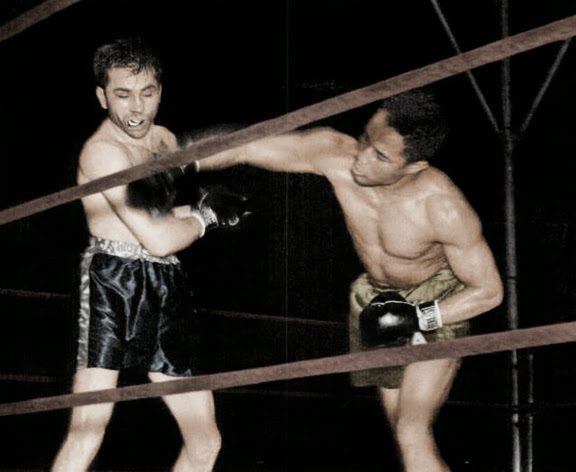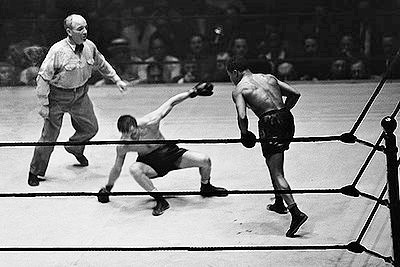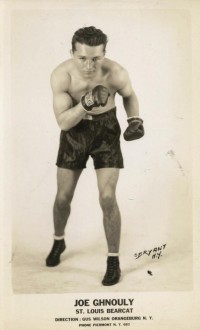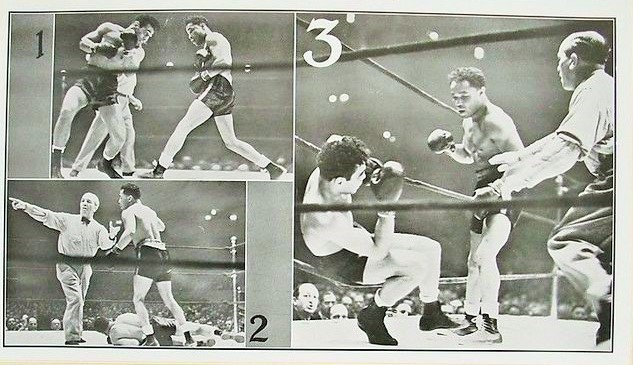As Marvin Gaye sang again within the day, “Ain’t nothin’ like the actual factor, child,” and as of late how boxing followers yearn for “the actual factor,” for significant competitors and real greatness. You’ll recall how a number of years again Floyd Mayweather Jr. took to calling himself “The Greatest Ever,” ‘TBE’ for brief, and whereas most took the self-accolade with a large grain of salt, the actual fact others didn’t tells all you might want to know concerning the lack of perspective some battle followers have regarding the historical past of pugilism. The reality is the Golden Age of boxing is a good distance gone now, many years in the past, and the true greats achieved feats at this time’s fighters can solely dream about.
Take, for instance, the person they referred to as “Murder Hank,” the one and solely Henry Armstrong, with out query one of many biggest strain fighters within the sport’s historical past, a dynamo of continuous aggression who attacked and reduce down opponents like a buzz-saw on wheels. In 1937 alone he fought 27 occasions, capping one of many biggest single years in any boxer’s profession by battering Petey Sarron to seize his first world championship. Give it some thought: 27 fights in a single 12 months. All wins, all however one by KO. That’s greatness.
So is the truth that in Might of the next 12 months he jumped all the way in which up from featherweight to welterweight to problem fellow all-time nice Barney Ross. After dominating Ross, he dropped down in weight and challenged one other champion and Corridor of Famer, Lou Ambers, out-toughing “The Herkimer Hurricane” in a brutal 15 spherical battle and thus successful the light-weight crown. Armstrong would vacate the featherweight title, however for a short time he held three of boxing’s eight conventional world championships on the similar time, a feat by no means to be duplicated. And we gained’t even get into how in March of 1940 he challenged for the middleweight title — in opposition to yet one more Corridor of Famer, Ceferino Garcia — however needed to accept a draw, although most modern thought he deserved the choice.
Within the meantime Armstrong maintained his hectic schedule, notching win after win in opposition to really formidable competitors. This was an period very completely different from ours, when the ranks have been crowded with wonderful preventing males, not diluted by superfluous weight courses and meaningless titles, and when followers demanded that prime pugilists take a look at themselves in opposition to probably the most harmful rivals.

And the easy fact is one can be hard-pressed to discover a higher stretch of wins in all of boxiana than those Armstrong piled up in his prime. The record of battlers he bested throughout these years, along with Sarron, Ross, Ambers and Garcia, consists of such names as Child Arizmendi, Benny Bass, Juan Zurita, Frankie Klick, Lew Feldman, Chalky Wright, and Lew Jenkins, a line-up of champions and title challengers that, collectively, eclipses Floyd’s complete file when it comes to high quality opposition. And that’s only a pattern of the various fighters battered by Armstrong’s churning fists.
To be extra concrete, in February of 1936, Henry misplaced by choice to Richie Fontaine. One month later he avenged the defeat after which started a really unimaginable run, successful all however three of 65 bouts in fewer than 5 years. The three matches he didn’t win included the aforementioned draw, a disqualification, and a extremely controversial loss to Ambers of their rematch when referee Arthur Donovan deducted 5 factors from Henry for fouls, inflicting Ambers’ choice win to be extensively considered an injustice; Armstrong had in reality, for the second time, gotten the higher of “The Herkimer Hurricane.” Give it some thought: 65 tilts in 55 months in opposition to among the greatest fighters in boxing historical past, and never one really legit defeat. Speak about “the actual factor.”

Following the controversial loss to Ambers, which had solely bolstered Armstrong’s status as the best boxer alive after Joe Louis, Henry targeted his energies on defending his 147 pound title. He was really a bit small for a welterweight, however that didn’t cease “Hammerin’ Henry” from racking up probably the most title defenses within the division’s historical past, nineteen in whole, earlier than the one-and-only Fritzie Zivic toppled him in an enormous upset. However earlier than he ever crossed paths with “The Croat Comet,” Armstrong notched title protection quantity fourteen in his hometown of St. Louis, Missouri when he took on one Joe Ghnouly, aka “The St. Louis Bearcat.”

The challenger was no slouch himself with 59 wins on his file, however he was not on the identical stage as his crosstown rival. In different phrases, Ghnouly was a gifted boxer, a legit contender who had gone the space with Ross and Child Chocolate and had crushed Eddie Cool, however Henry Armstrong was one thing extra, a real all-time nice; certainly, with out a hint of hyperbole, we will say Hank was one in every of The Greatest Ever. He floored Ghnouly thrice in spherical one, which prompted the challenger to get on his bicycle and preserve his distance as greatest he may over the following few rounds, earlier than three Armstrong left hooks ended the match within the fifth.
And simply twenty days later, there was “Murder Hank” in Madison Sq. Backyard, stopping in 9 rounds challenger quantity fifteen, Pedro Montanez, and galvanizing The New York Instances to rave about Henry’s fistic “savagery,” declaring that “no man close to Armstrong’s inches or poundage may have survived [his] blistering firepower.”

Two knockouts in two world title defenses in simply shy of three weeks. That’s how they used to roll, of us. A unique time and a distinct sort of battle recreation, when boxing followers may watch true legends do battle. And knew “the actual factor” once they noticed it.
— Michael Carbert




















